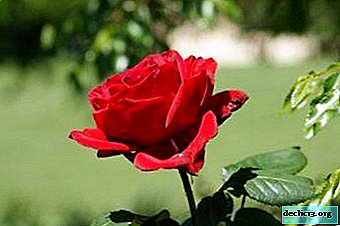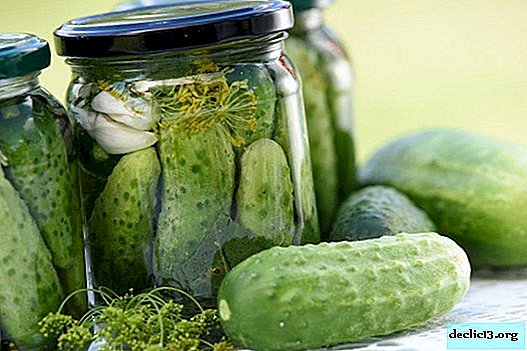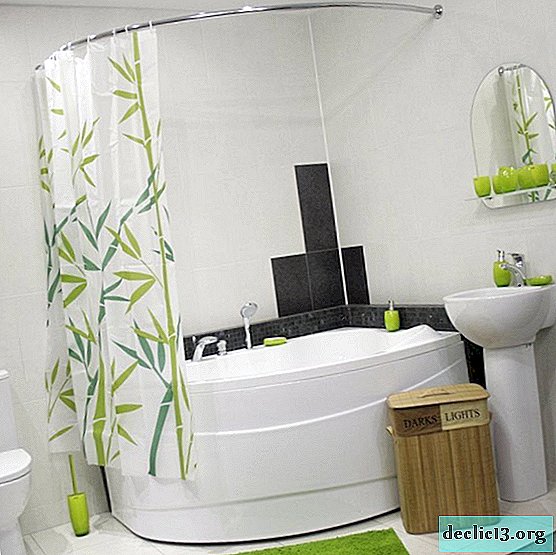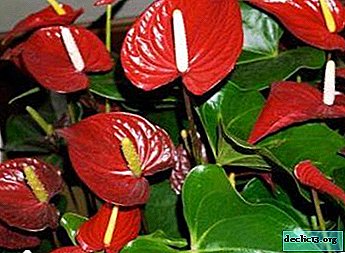We save the clerodendrum: why do the leaves turn yellow and what if they fall off?
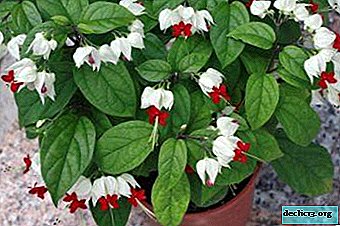
Clerodendrum is an exotic plant that has the shape of a decorative-flowering vine. This tropical guest has been adapted for growing at home recently.
What diseases and pests can infect clerodendrum at home? Consider the main reasons why this delicate flower and how to deal with plant ailments can get sick. We will tell you about preventive measures and rules for caring for a flower. Also watch a helpful video on the topic.
Susceptibility to various diseases
ATTENTION: The natural habitat of flowering shrubs - clerodendrum - the moist tropics of Africa, Asia and South America. The plant has bright green leaves up to 30 cm in size, flexible shoots that are woody in the lower part. Inflorescences are collected in a brush or shield, in shape resemble a butterfly. The peculiarity of the plant is that all its parts emit a delicate, pleasant aroma.Clerodendrum at home is susceptible to disease if improperly maintained, unsuitable conditions (more about caring for clerodendrum can be found in this material). This tropical plant does not tolerate drafts. Another cause of many diseases is irregular watering. If water stagnates in buds, it causes putrefactive processes.
Water is also a suitable breeding ground for fungi that cause gray rot, powdery mildew. Particularly susceptible to diseases are plants that lack light and minerals in the soil.
The plant has yellow foliage
This problem is the most common. If the lower leaves turn yellow and this happens infrequently - the plant gets rid of old, unnecessary greenery. This is a natural reason and there is no need to worry in such a situation.
Diagnostics
Leaves - an indicator of the state of the plant. It is this part that first responds to improper care or various diseases. Yellowing of the leaf plate occurs in different ways. It depends on the factor that causes the process:
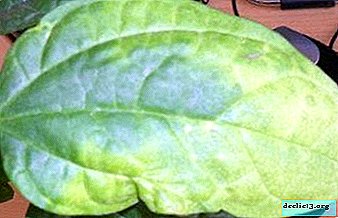 The edges of the leaves turn yellow - the root is damaged (dies).
The edges of the leaves turn yellow - the root is damaged (dies).- Irregular yellow-brown spots - burns from direct sunlight.
- Small spots of different color saturation throughout the leaf plate - fungal infections, other diseases.
- The edges turn yellow and curl, the leaf becomes pale - infection by pests.
- Yellowing of the leaf along the central vein is an overabundance or lack of mineral elements.
Why is this happening?
In the list of main reasons:
- heavy or scarce watering;
- stagnation of water;
- a small pot for rhizomes.
If the spots are pronounced brown:
- clerodendrum is in the wrong place;
- cold air blows on him;
- he is exposed to drafts.
Falling foliage indicates dry indoor air. Also, the problem is caused by excess sunlight - the plant has enough diffused lighting.
IMPORTANT: The leaves may turn yellow and fall when disease progresses or when infected with insect pests. Possible diseases include dry spotting, anthracnose, septoria, and rust.What to do to fix the problem?
The first steps are checking the condition of the soil, regulating irrigation and fertilizing. The soil should be light, water and breathable. Dense and clogged soil does not allow moisture to absorb.
Carrodendrum should be watered only with filtered (settled) waterwhose temperature is not lower than 23 degrees. Watering is necessary:
- in the autumn 1-2 times a week;
- in winter - 1 time in 2-3 weeks;
- in spring and summer - when the drying of the upper soil layer occurs.
If yellow spots are caused by improper care, the problem should be solved.
How to eliminate yellow spots that are caused by an ailment?
You can help a sick liana by feeding it and spraying it with a weak dose of Ferovit, Ferillen (instructions on the package). These iron-containing drugs enhance the protective properties. Take further action, given the disease.
 Dry spotting or alternariosis. Use fungicides for treatment. Acrobat (20 g per 5 l of water), Vitaros (2 ml per 1 l), Oksikhom (20 g per 10 l). Spray 2 times, the interval between the procedure is 10 days.
Dry spotting or alternariosis. Use fungicides for treatment. Acrobat (20 g per 5 l of water), Vitaros (2 ml per 1 l), Oksikhom (20 g per 10 l). Spray 2 times, the interval between the procedure is 10 days.- Anthracnose. For treatment, 3 treatments are enough. Preparations - Abiga-Peak (50 g per 10 l), copper sulfate (100 g per 10 l), colloidal sulfur (100 g per 10 l).
- Septoria. You can use Vitaros, Abiga Peak, colloidal sulfur in the same dosage. The interval between spraying is 6-9 days.
- Leaf rust. Spray fungicides from the list without changing the dosage. You can also take Topaz (4 ml per 10 l), Ordan (20 g per 5 l), Khom (40 g per 10 l). Repeat treatment with an interval of 10 days. With rust, biological products (Fitosporin, Bactofit) will not help.
Other flower diseases: diagnosis and treatment
| The main symptoms for diagnosis | Disease name | Control measures |
| There are white spots on the leaves, the plate loses its color. | Chlorosis. | Drugs for help - Ferrovit, Ferrilen. They can be sprayed on a diseased plant or added to water for irrigation (dosage is indicated on the package). |
| All parts wither. | Root rot. | Remove the clerodendrum from the pot, rinse the root, cut off the most damaged parts. The places of cuts should be covered with charcoal (chalk, ash), transplanted into a new pot. |
| On the shoots are dark spots. | Stem rot. | Remove affected parts. Then treat with fungicides (Fitosporin). Be sure to reduce watering. |
| White plaque on the leaf plate. | Powdery Mildew | Cut off damaged parts. Treat with any fungicide for indoor plants. Be sure to adjust the watering. |
| White plaque with a gun. | Downy mildew dew. |
Pests: general information
Clerodendrum most often affects:
- spider mite;
- scale shield;
- whitefly;
- mealybug.
- Spider mite. 1 ampoule of Actellik per 1 liter of water. Spray 1 time in 3 days. Repeat 2-4 times.
- Shields. Prepare a working solution of Actellik, Actara, Metaphos (dosage on the package). Spray for a month, interval - 7 days.
- Mealybug. Wipe the leaves gently with alcohol. Then spray with a solution of Spark, Actara, Commander.
Small aphid colonies can be eliminated using folk methods. This pest does not tolerate the smell of onions and garlic. You can also put a pot with a Dalmatian daisy next to the clerodendrum - this will serve as an effective "distraction maneuver". Of the chemicals for controlling large colonies of aphids, Aktara, Actellik, Calypso, Karbofos, Angio are suitable.
Conclusion
Clodendrum diseases develop due to improper care or inappropriate growing conditions. The plant can not be placed in cold air, exposure to drafts is unacceptable. Watering should be moderate; sunlight should be diffuse. For prevention, it is recommended to spill the soil with potassium permanganate, to spray the plant with a weak dosage of various stimulants.

 The edges of the leaves turn yellow - the root is damaged (dies).
The edges of the leaves turn yellow - the root is damaged (dies). Dry spotting or alternariosis. Use fungicides for treatment. Acrobat (20 g per 5 l of water), Vitaros (2 ml per 1 l), Oksikhom (20 g per 10 l). Spray 2 times, the interval between the procedure is 10 days.
Dry spotting or alternariosis. Use fungicides for treatment. Acrobat (20 g per 5 l of water), Vitaros (2 ml per 1 l), Oksikhom (20 g per 10 l). Spray 2 times, the interval between the procedure is 10 days.
